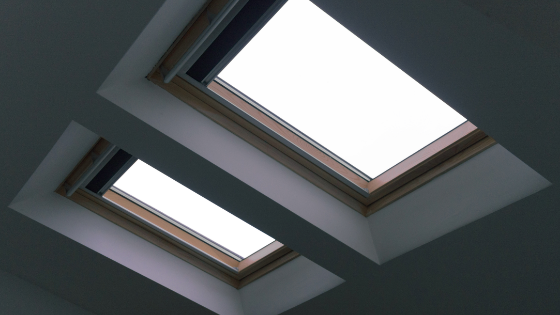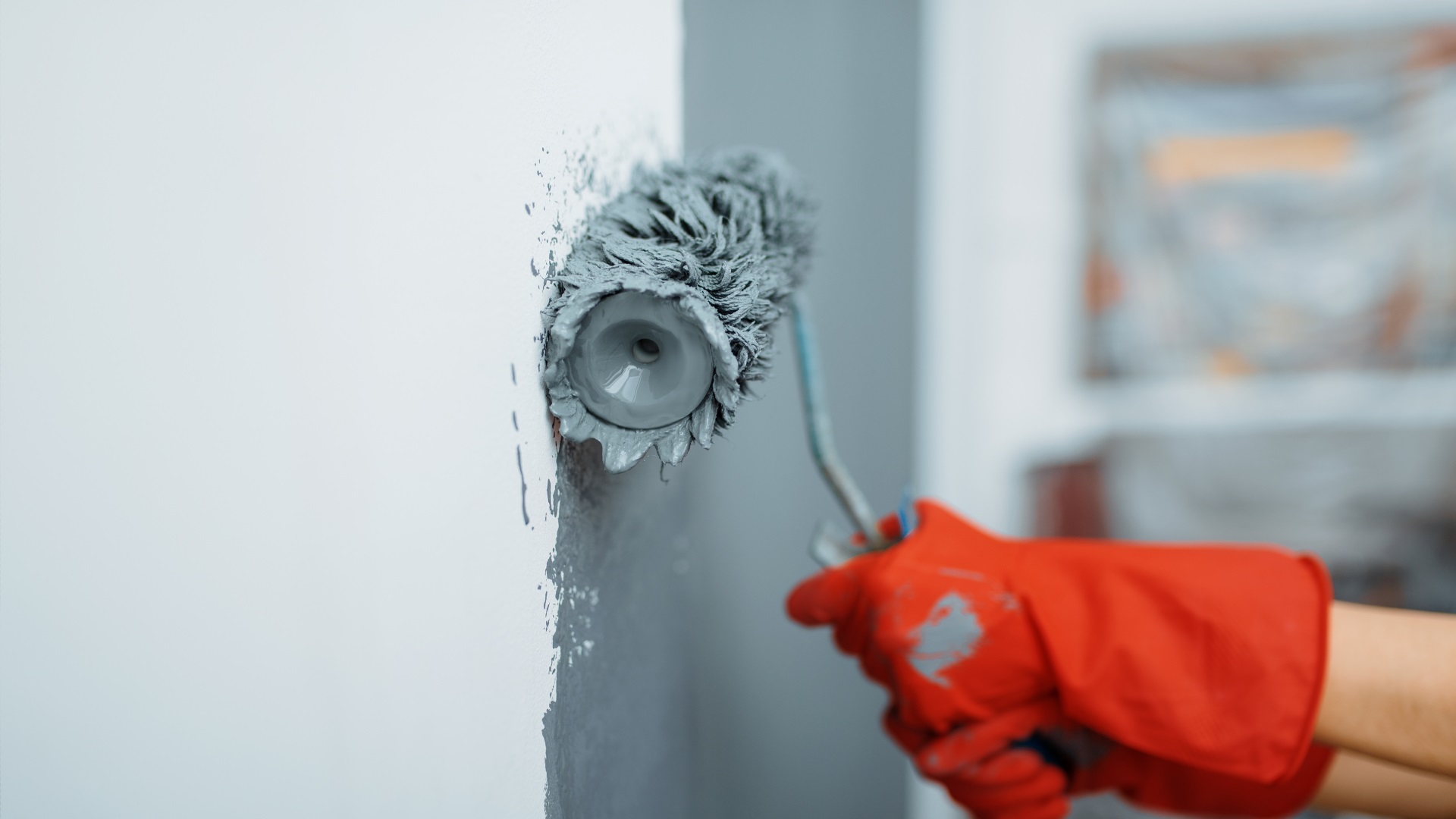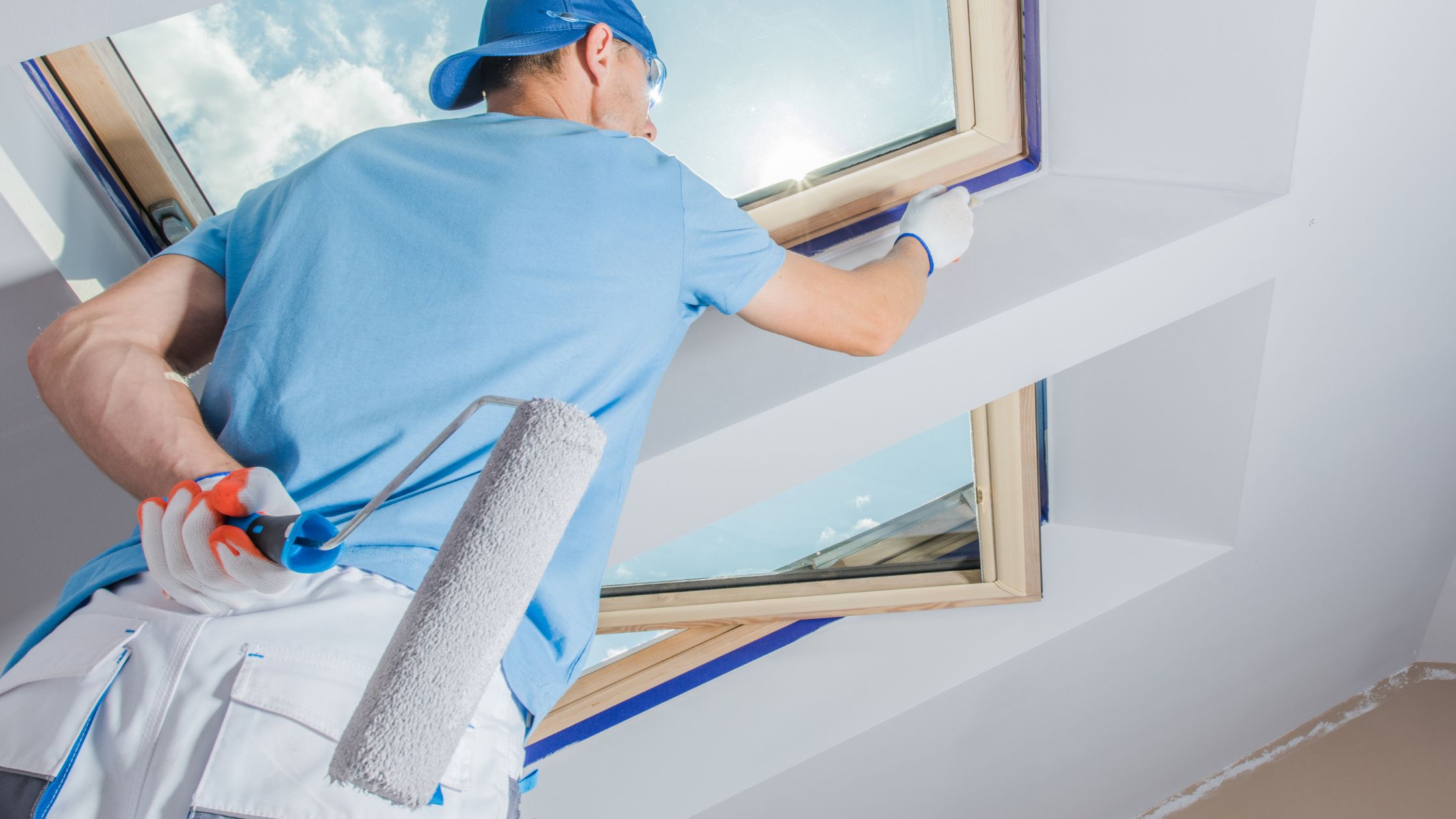High ceilings are the hardest to paint and are not for the faint of heart. However, if you plan and execute the entire project with all the necessary tools at your disposal, you can do a pretty good job. Luckily, we have just the guide for you today. It will paint a perfect picture (pun intended) of the entire process of painting your high ceiling with just a few tools. So with that said, let’s get down to the business:
Tools You Need
- Extension Pole: Since you are going to paint high ceilings, it is imperative that you get the extension pole for paintbrush and roller allowing you to easily paint even some of the hard to reach areas of your ceiling.
- Drop Sheets: Drop sheets, and painter’s tape are a must to protect the furniture and floor of your entire room.
- Ladder or Scaffolding: You will also need a structure to stand on and reach the height you desire to paint the ceilings.
Step 1: Choosing Between Ladder and Scaffold
Before you move to splashing the paint on your ceiling, you first need to figure out the structure you will be using to reach a height. Though you will have an extension pole with the roller on it so you can easily extend or reduce its size as per your need, it won’t be long enough for you to reach the ceiling. Therefore, you need to decide between the scaffold and ladder.
Choosing Scaffold:
If you need to work at a height for longer periods, using scaffold is the right approach, and it’s safer too. Plus, if your room is big, you can conveniently paint the center of the ceiling by placing it in the center.
However, they can be cumbersome to set up and have lower mobility compared to ladders. Just make sure to first check the scaffold to ensure it is fully assembled and locked before you climb on it.
Choosing Ladder:
There are different kinds of ladders out there, but for painting high ceilings, we suggest that you go with platform ladders, stepladders of more than 6’ or articulating ladders. If the ceilings are very high, you might need an extension ladder.
Just remember that ladders have a weight limit of 200 to 300 pounds depending on the type, so make sure not to exceed it, or it can break. You may also need to invest in ladder covers or mitts to protect your walls from potential gouges and scratches.
Step 2: Room Preparation
Once you have decided on the structure for reaching the height, you need to move towards protecting the floor and other items in your room. It is best to remove everything from the room such as the furniture, TV, fridge and so on to protect them from the paint.
However, if you know you can be very careful with the paint, we suggest that you at least use the drop sheets to cover everything, including the floor and fasten the cover using painter’s tape. It is also recommended that you take down the ceiling fans and light bulbs.
Before removing any electrical fixtures, we suggest that you cut the power supply by turning off the circuit breaker of that room and tape down the button so no one can unintentionally turn it back on.
Tip: If you are painting at night, you can leverage portable lighting.
Once everything in the room is cleared and covered, you need to wash the ceiling to get rid of any dirt and dust. Use clean cloths, warm water, and mild detergent to do so and then let it dry for one hour or more before moving on to the next step.
Step 3: Priming and Painting
Before you start painting the ceiling, you first need to prime it so that the paint can sit well on the ceiling. So mask the perimeter of the ceiling using the painter’s tape and then use the extension pole with a roller to easily reach all areas.
Tip: You can use this paint calculator by The Spruce to know the exact amount of paint you will require for your ceiling.
After you have applied the primer, you need to wait for it to dry completely. Once done, follow these steps:
- You need to first plan the execution of your rolling. Decide on the starting and ending point and also the pattern you will follow.
- Also, decide in advance where you will need the help of a ladder or scaffolding and where just the extension pole will be enough.
- Now wear some old clothes so that the paint doesn’t ruin your daily-use clothing. And once you are done with the preparations, get to painting from the starting point you selected and following the pattern you decided.
- Add paint in the paint tray, dip the roller in the paint and when the roller is evenly covered, get rid of the excess paint and then start rolling it on the ceiling.
- Make sure not to accidentally overlap or double coat the paint. You need to keep it a single coat throughout the area.
Once you are done with the first coat, let it dry and then decide if you want to apply a second coat as well, if so, then do it following the same pattern you used for the first one.
Over to You
Once you are done with the paint, just pick up the drop sheets you used to cover the area, dispose of any used sealant cans or paint, and clean all the tools used including the brushes and rollers with warm, soapy water. Lastly, remove the painter’s tape from the parameter of the ceiling and you are done!





